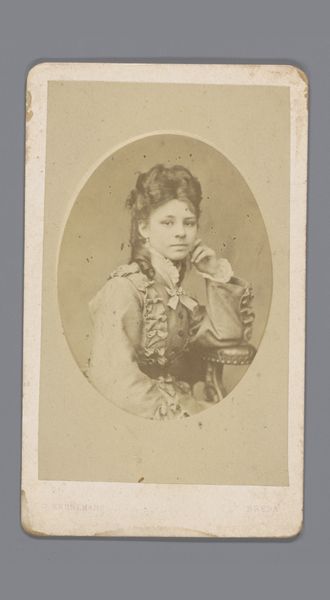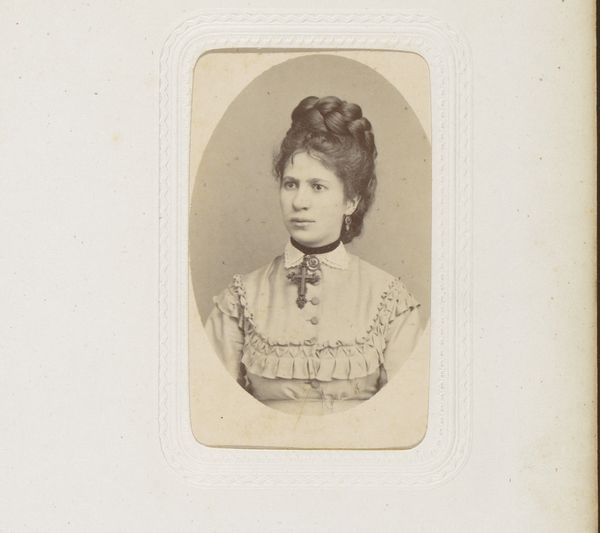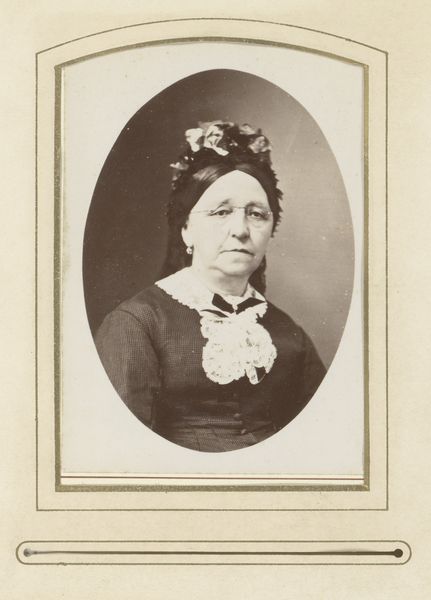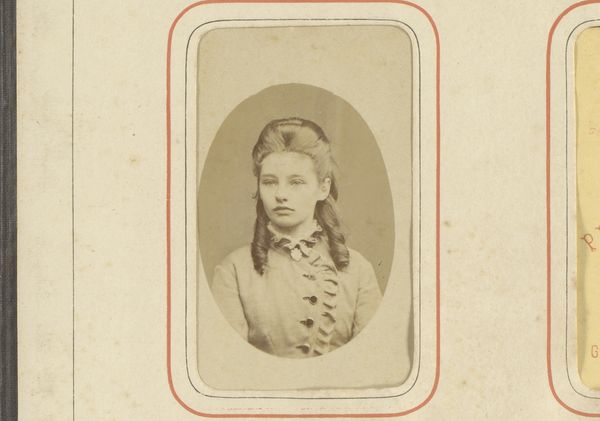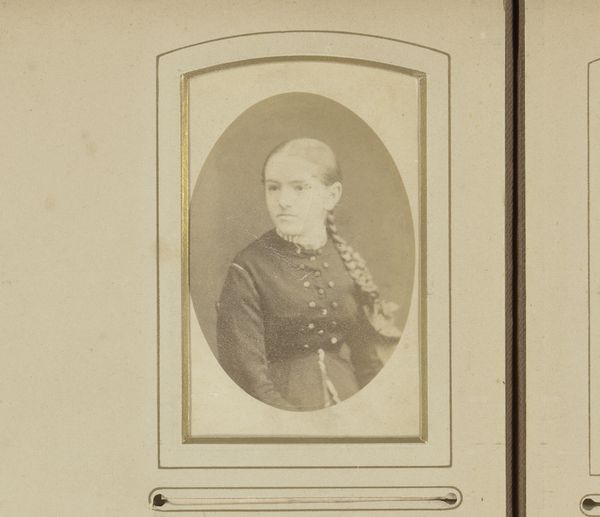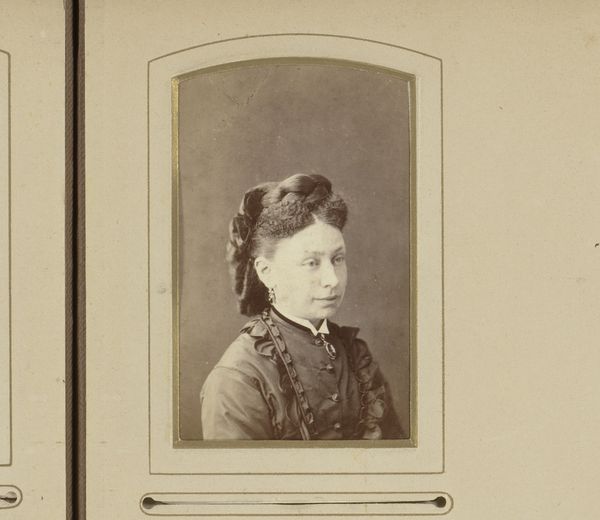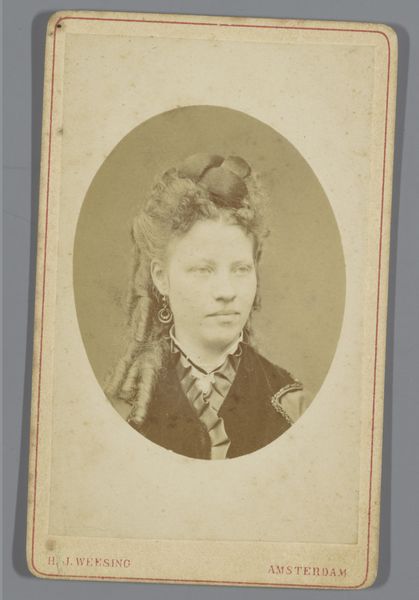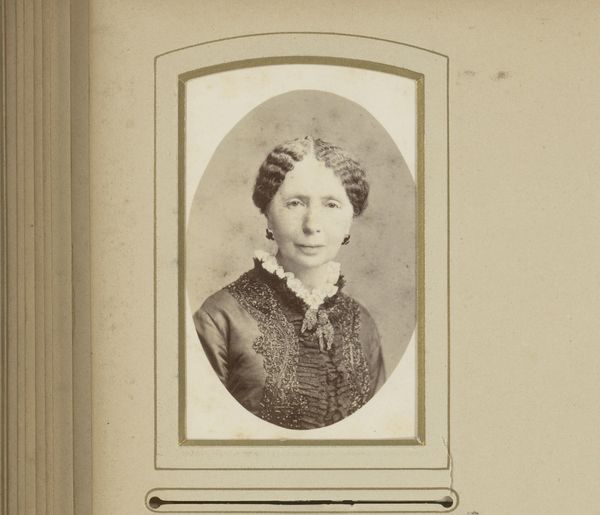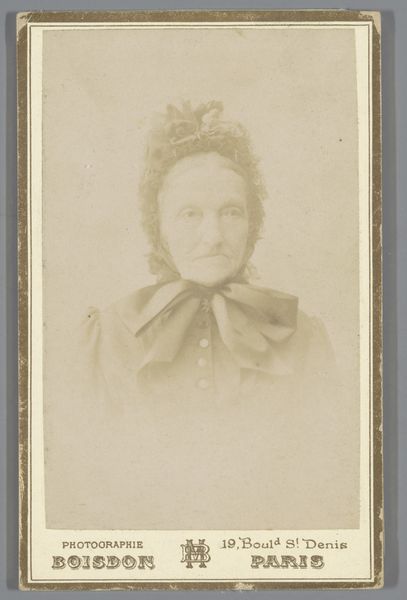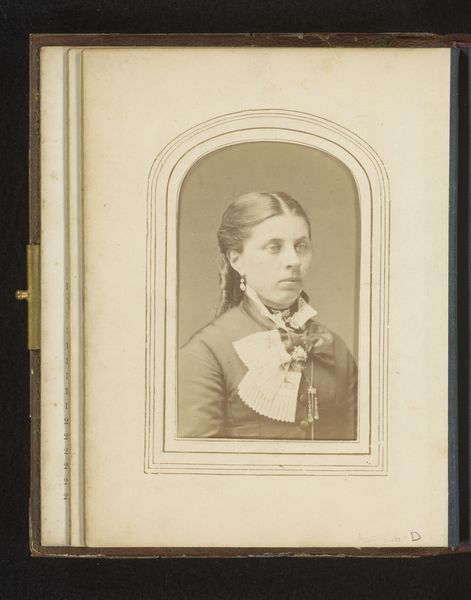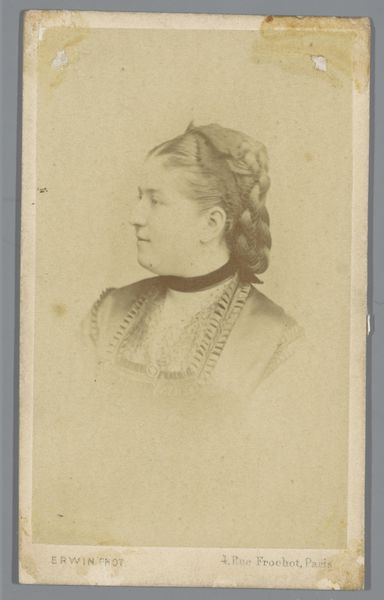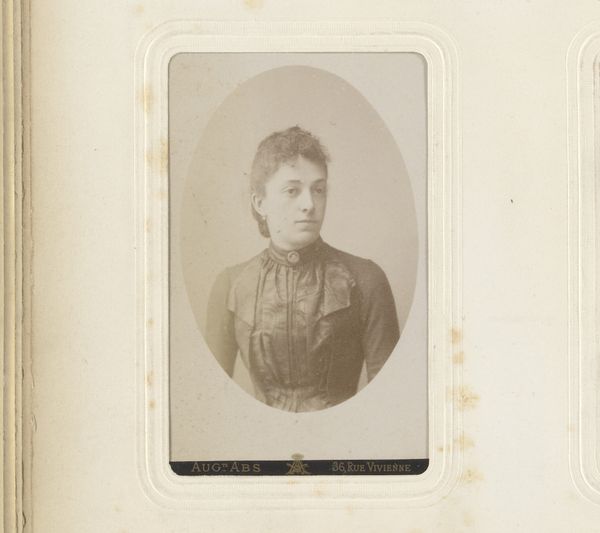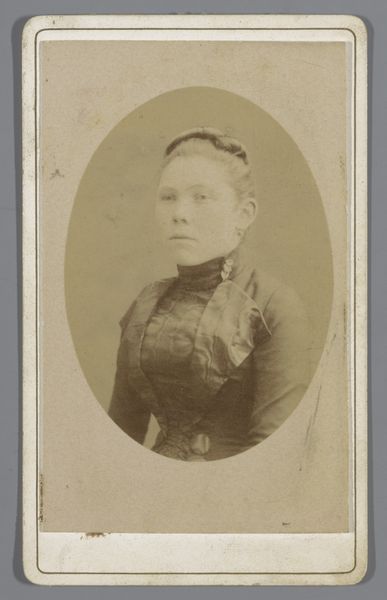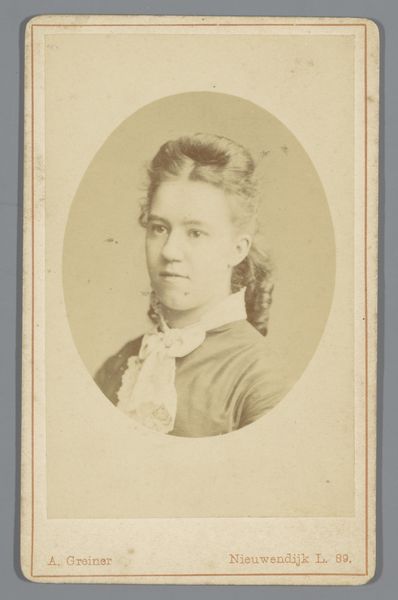
photography, albumen-print
#
portrait
#
photography
#
genre-painting
#
albumen-print
Dimensions: height 105 mm, width 63 mm
Copyright: Rijks Museum: Open Domain
Curator: Before us we have an albumen print attributed to Gerardus Wilhelmus Kerremans, tentatively dated to 1874, titled "Portret van een onbekende vrouw" - Portrait of an Unknown Woman. Editor: There's something undeniably melancholic about it, isn’t there? A subdued palette, the slightly faded quality of the albumen print, and the woman's expression...it all points to a feeling of introspection and perhaps even a hint of resignation. Curator: Albumen prints like this became immensely popular in the mid-19th century, part of the carte-de-visite craze. Everyone, regardless of their social station, suddenly had access to affordable portraiture. Think of it as the Victorian era's Instagram. Editor: And each tiny portrait carried meaning, didn't it? Her attire, for instance – the delicate ruffled collar and small bow – suggests a certain aspiration toward refinement, while remaining relatively modest. I'd wager this was meant as a representation of respectable womanhood. Curator: Exactly. The cultural weight placed on female representation during this era cannot be overstated. The rise of photography studios democratized portraiture, while also codifying and reinforcing social expectations through conventions of pose, dress and setting. An interesting tension. Editor: I'm intrigued by that oval framing as well. It’s such a common device for portraits, isn’t it? Perhaps intended to give it an almost iconic quality, something eternal and unchanging... even as the subject remains unnamed, unknowable to us today. Curator: Indeed, these studio portraits presented very staged versions of reality, yet remain some of the few historical artifacts available, giving glimpses into individual histories and trends in visual culture, while at the same time obscuring their complex stories. Editor: It truly makes one wonder about the woman herself. What were her hopes, her dreams, her daily life like? In some ways, that anonymity almost amplifies the universal qualities of her image – she becomes a symbol of her time, yet strangely timeless too. Curator: A potent reminder of the past and a starting point to examine larger social structures! Editor: I agree! It really leaves us to fill in the narrative.
Comments
No comments
Be the first to comment and join the conversation on the ultimate creative platform.
